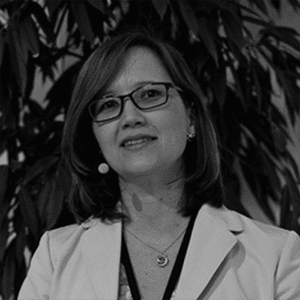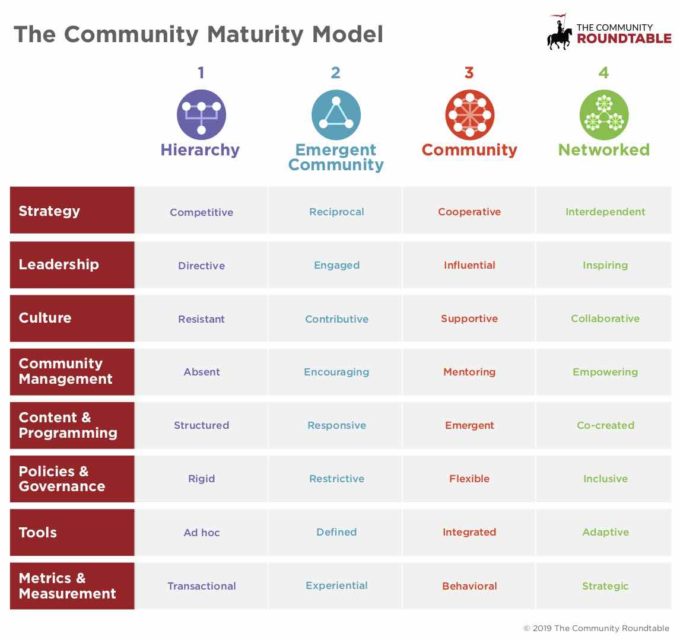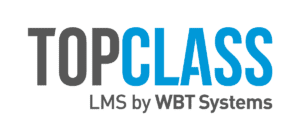
Whether or not most of us are even aware of it, communities exist in practically all aspects of our lives and they can have a profound impact on learning. And, as this week’s guest, co-founder of the Community Roundtable, Rachel Happe puts it,
Communities are just-in-time learning mechanisms—they’re containers of trust that scale beyond individual relationships.
That’s why it’s so important for us as learning leaders to be intentional and cultivate these within our organizations.
In this episode of the Leading Learning podcast, Jeff talks with Rachel about the powerful role of communities including why organizations should be explicit in their management of them, ways they’ve evolved over the past decade, and what’s necessary to create a successful one.
To tune in, just click below. To make sure you catch all of the future episodes, be sure to subscribe by RSS or on iTunes. And, if you like the podcast, be sure to give it a tweet!
Listen to the Show
Read the Show Notes
[00:18] – A preview of what will be covered in this episode where Jeff interviews Rachel Happe, co-founder of the Community Roundtable.
Note that Harold Jarche (who we interviewed in a previous podcast episode) was the one who suggested we talk with Rachel based on the idea that community is such a powerful force for learning.
[02:47] – Introduction to Rachel and some additional information about her background and how it led to creating Community Roundtable.
Defining Community/What it Means to Cultivate Them
[08:58] – To make sure that we are all on the same page, what do you mean when you use the term “community?”
Rachel admits it took them a few years to come up with their definition because of the fact that everybody uses it and means different things by it. She says she let social network analysis inform how she thinks about communities and that led her to the definition:
A community is group of people with unique and shared values, beliefs, and artifacts.
[10:46] – In your work, and as the Community Roundtable, are you helping organizations to identify and cultivate those types of communities, to bring more people into them? Can you describe what the work really involves?
Rachel explains that it’s mostly to be intentional and explicit instead of implicit. She says communities exist in our world all over the place—and they vary in how/if they are managed and how long they may last. So communities exist throughout our lives, and organizations also have a number of communities and a network of communities. And those organizations already have a network of communities outside of their organization that they participate in and they have their employee community that’s divided into different sub-communities.
So all organizations operate in a network already but whether or not they choose to see that and cultivate those communities or not, is in question—meaning they don’t have to—and many don’t. Rachel points out that many organizations treat those communities in a very transactional way, which is a very high-cost way to get a conversion or a commitment. This is part of why you should intentionally cultivate those communities.
Sponsor: Community Brands
[13:15] – If you want to be intentional about connecting with your community, cultivating relationships, and delivering great learning experiences, we suggest you check out our sponsor for this quarter.
Community Brands provides a suite of cloud-based software for organizations to engage and grow relationships with the individuals they serve, including association management software, learning management software, job board software, and event management software. Community Brands’ award-winning Crowd Wisdom learning platform is among the world’s best LMSes for corporate extended enterprise and is a leading LMS for association-driven professional education programs. Award-winning Freestone, Community Brands’ live event learning platform, is a leading platform for live learning event capture, Webinars, Webcasts, and on-demand streaming.

Communities vs. Networks
[14:20] – How do you see the connection/relationship between communities and networks? At least based on your maturity model, you seem to view networks as a more evolved, or mature state of community.
Rachel clarifies that the maturity model is not intended to say that network is the state that everyone should want to be in. For example, you may want a single use community and that’s fine—you don’t have to go that next step. But she does think that every community sits within a network—and implicitly it always does. You can either make that relationship explicit and manage it or not.
What she sees in the organizations and clients they work with is that some start with one community that’s really designed to serve one major use case and that a lot start in the customer support space. However, as they grow and mature, they start bringing in more and more of the organization/ecosystem and they start naturally extending the use cases that they support. So they kind of develop a center of gravity that pulls people in and all of a sudden they start fragmenting and becoming more complex and they develop into a network rather than a single use community.
But what they’re seeing today – and where the space has evolved – is now clients are coming to them who don’t have a formal community or network approach and they acknowledge they have an ecosystem they want to enable. They want to learn how to explicitly document/design/architect that ecosystem from the get go, and then apply technology and use that ecosystem to transform their engagement model. So this is the pathway organizations are taking to digitally transform their culture.
[17:35] – What do you find are the main stumbling blocks that organizations run into (when trying to create communities) and how do people tend to overcome them?
Rachel admits that when a community is successful, it’s often very hard to figure out why they succeeded and why other ones failed because it just looks like it was destiny. But what’s usually true is they have a really firm strategy. What she’s found over the years is that people are very aware at this point that they need a shared purpose for community. However, what’s less obvious is that if you don’t have the shared value defined, people won’t stay engaged. So what is it that you’re doing together that you couldn’t do alone?
Because the people who want to, and will, engage deeply want to get stuff done so unless you’re making a meaningful difference, their attention is going to go somewhere else. Rachel says it’s usually one of those two issues—you haven’t defined the shared purpose well enough or you haven’t defined the shared values. If people aren’t coming at all, you don’t have a shared purpose, if people aren’t staying engaged, you don’t have a compelling shared value.
Sponsor: WBT Systems
[19:40] – High-value learning opportunities can be a great way to create a shared focus for your community. To deliver compelling learning online, we encourage you to check out our sponsor for this quarter.
WBT Systems develops the industry-leading TopClass LMS, which delivers transformative professional development experiences for education and certification programs. With a single point of support from in-house integration experts, TopClass LMS easily integrates with a wide variety of systems to provide efficient administration and a unified learning experience. WBT supports organizations in using learning technology to help drive growth in membership, increase revenues, and enhance the learning experience. WBT believes in truly understanding your challenges and partnering with you to ensure the success of your education programs.
The Evolving Role of Communities
[20:50] – You’ve been doing this – at least in the form of the Community Roundtable, for about 10 years now. What are some of the biggest shifts you have seen in how your clients/companies/organizations are thinking about community as a component of their business and how they’re going about it?
Rachel shares the biggest shift involves how when she started, almost all community managers were symbolically sitting in a closet in a corner, many of them by themselves. But it has become much more strategic over time. Along with that, they actually got a lot of pushback from community managers themselves who were saying it was an art and you couldn’t teach it. Rachel talks about how as a market researcher she was determined to figure it out.
As a result of the research that has been done over the years, they actually now have quantitative data and the ability to measure—and they now know what they need to measure. She discusses how they changed their research again a couple years ago because they felt they got to the point they could document exactly what you need to do to grow a successful community. So now their research has shifted to look at how communities are impacting their organizations and organizational strategy.
Communities and Learning
[25:02] – We’re hearing more these days about lifelong learning, and about related concepts like learning in the flow of work or learning in the flow of life. How do you view the relationship between community and learning and how does each support the other?
Rachel says that any good community is a learning community. Just like learning, to enable people to thrive, you need support and challenge. And you need different support and challenge depending on where you are. The problem with having one teacher or one person to teach you is that your needs change by context, timing, or what you’re doing.
She explains how communities really act as just-in-time learning mechanisms and they are containers of trust that scale beyond your individual relationships. So they allow you to access what you don’t know you don’t know. They are just really effective mechanisms of getting you what you need when you need it in a way that you could never create a formal learning path for because it would be to expensive to individualize it at that level.
[27:57] – Related to the last point, how do you see changes in regards to the future of work, automation, and AI impacting community—and the idea of just-in-time learning as mentioned above?
Rachel shares she happens to think they are pretty complementary because what AI does really well is it surfaces what we already know. But what’s interesting she says if you look at it from an innovation or learning angle, is that communities, relationships, and dialogue are really the true front end of innovation (other than art). She explains that once you can actually articulate things in language, you have to use each other to make sense of new information coming in and AI isn’t going to help with that.
People are really uniquely qualified to imagine what does not exist already and AI can’t do that since it pulls from what we already know. So those two things have to act in tandem. Rachel shares that a chart she shows to clients a lot is flow versus stock knowledge and it’s the constant recycling of that in a community that is so powerful in terms of the engine of innovation.
[30:35] – How does this factor into your own life? Do you have particular communities that are your go-to places?
Rachel reveals that the communities she tends to engage online with the most are alumni communities from her school because they have a shared sensibility. She also engages in parenting communities and has some others she participates in more occasionally on the professional side.
[32:38] – What is one of the most powerful learning experiences you’ve been involved in, as an adult, since finishing your formal education?
As a self-described experiential learner, Rachel talks about her experience as a 16-year-old exchange student, specifically, playing the intercultural learning game, BaFa’ BaFa’, and how powerful it was. She also shares about another impactful experience at CR that involved working with community expert Nancy White, where she participated in a virtual drawing collaboration.
[35:20] – How to connect with Rachel and/or learn more:
- Twitter:@rhappe
- Email: Rachel@communityroundtable.com
- CR Website: https://communityroundtable.com
- CR Annual Report: State of Community Management 2018
[36:03] – Wrap-Up
If you are getting value from the Leading Learning podcast, be sure to subscribe by RSS or on iTunes and we would be truly grateful, as it helps us get some data on the impact of what we’re doing.
We’d also appreciate if you give us a rating on iTunes by going to https://www.leadinglearning.com/itunes. We personally appreciate your rating and review, but more importantly reviews and ratings play an important role in helping the podcast show up when people search for content on learning and leading.
And we would be grateful if you check out our sponsors for this quarter. Find out more about Community Brands and WBT Systems.
Finally, consider telling others about the podcast. You can send a tweet by going to leadinglearning.com/share. You can also Like us on Facebook at facebook.com/leadinglifelonglearning and share us with others there. However you do it, please do help to share the good word about the podcast.
[33:16] – Sign off
See Also:



 Transactions vs. Relationships
Transactions vs. Relationships
Leave a Reply